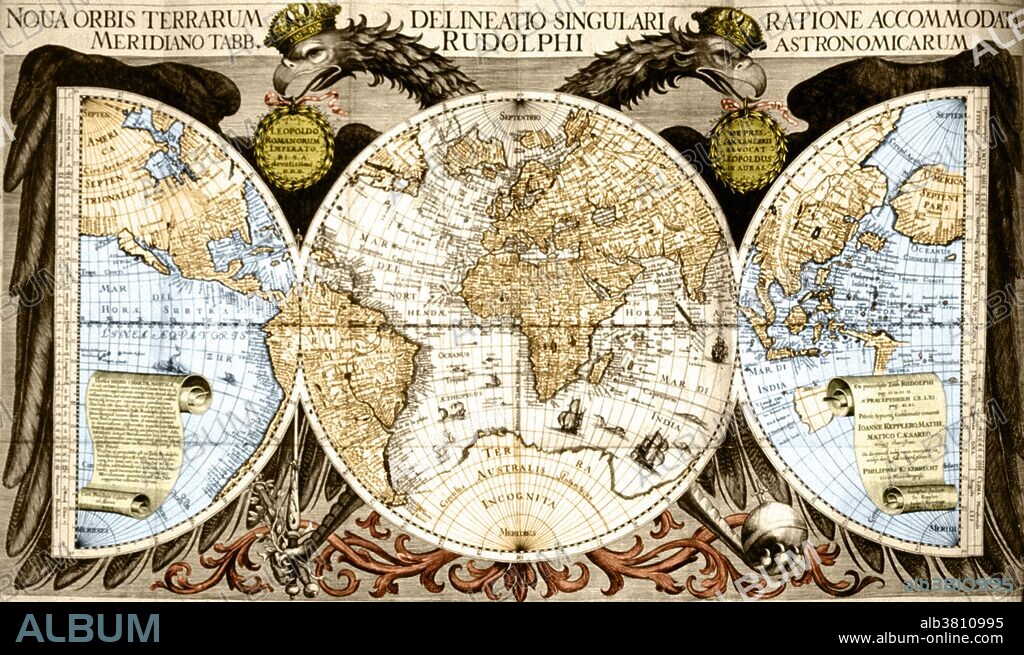alb3810995
Kepler's World Map, Tabulae Rudolphinae,1627

|
Ajouter à une autre Lightbox |
|
Ajouter à une autre Lightbox |



Avez-vous déjà un compte? S'identifier
Vous n'avez pas de compte ? S'inscrire
Acheter cette image

Titre:
Kepler's World Map, Tabulae Rudolphinae,1627
Légende:
Voir la traduction automatique
Color enhanced map of the world from Kepler's Tabulae Rudolphinae, quibus astronomicae scientiae, temporum longinquitate collapsae restauratio continetur. The Rudolphine Tables consist of a star catalogue and planetary tables published in 1627 using data from Tycho Brahe's observations. Johannes Kepler (1571-1630) was a German mathematician, astronomer and astrologer. A key figure in the 17th century scientific revolution, he is best known for his works Astronomia nova, Harmonices Mundi, and Epitome Astronomiae Copernicanae. These works also provided one of the foundations for Isaac Newton's theory of universal gravitation. Kepler devised the three fundamental laws of planetary motion. These laws were based on detailed observations of the planets made by Tycho Brahe and himself. Kepler's first law states that the planets orbit the Sun in elliptical paths, with the Sun at one focus of the ellipse. The second law states that the closer a planet comes to the Sun, the faster it moves. Kepler's third law states that the ratio of the cube of a planet's mean distance from the Sun to the square of its orbital period is a constant.
Crédit:
Album / Science Source
Autorisations:
Modèle: Non - Propriété: Non
Questions sur les droits?
Questions sur les droits?
Taille de l'image:
3855 x 2265 px | 25.0 MB
Taille d'impression:
32.6 x 19.2 cm | 12.9 x 7.5 in (300 dpi)
Mots clés:
16E SIECLE • 16EME S • ALLEMAND • ALLEMANDE • ASTROLOGIE • ASTRONOMIE • CATALOGUE • CÉLÈBRE • CELEBRITE • EUROPÉEN • HOMME DE SCIENCE • ILLUSTRATION • MAPPEMONDE • MATHEMATICIEN • MATHÉMATIQUE • OBSERVATOIRE • PLANETARIUM • PLANISPHERE • PORTAIT • PORTRAIT • POTRAIT • SAVANT • SCIENCE: ASTROLOGIE • SCIENCE: ASTRONOMIE • SCIENTIFIQUE • SEIZIÈME SIÈCLE • XVIE SIECLE • ZODIAQUE, ASTROLOGIE
 Pinterest
Pinterest Twitter
Twitter Facebook
Facebook Copier le lien
Copier le lien Email
Email
